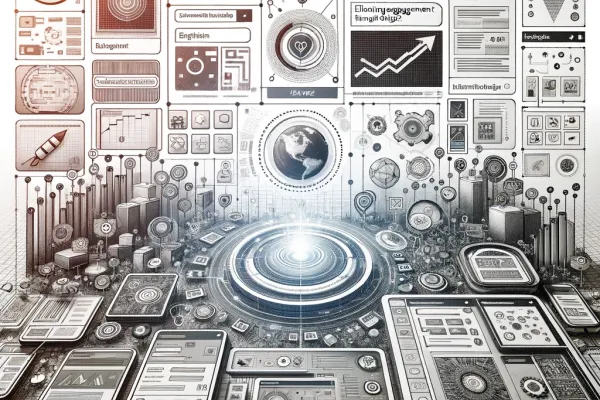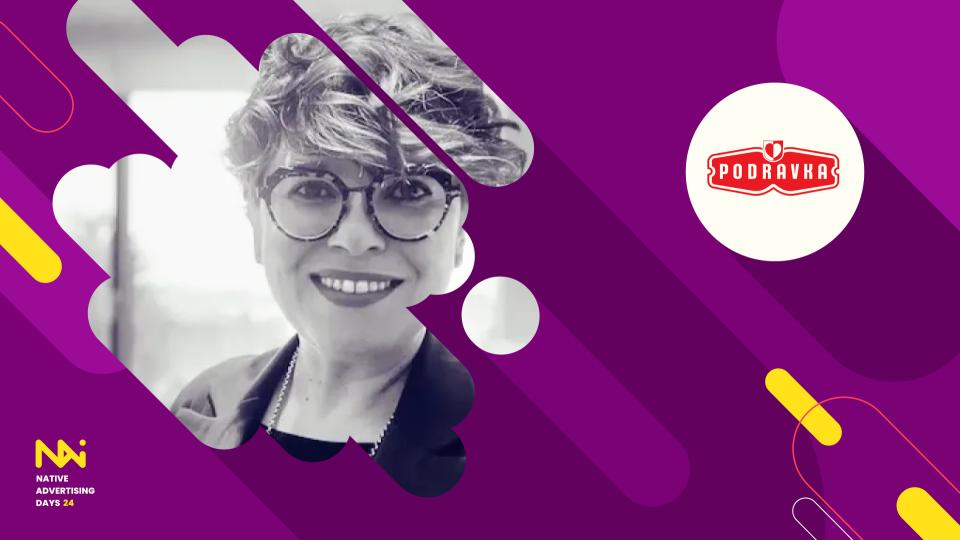
 Details
Details
“Interactive digital storytelling, including native advertising content, emerged as a cornerstone of our platform's success from the outset. Today, customers use the platform to craft compelling narratives that captivate their audiences.”
Through using Vev's dynamic interactive content creation tool, users report a staggering 50-fold increase in audience engagement compared to traditional CMS templates. Undoubtedly, this approach — building visually within a platform that encourages synergy between tech and design — proves to be a winning formula for brands seeking to educate, engage, and convert their target demographics.
These insights are provided by Tine Karlsen, CEO and co-founder of Vev — a premium content creation platform empowering users to craft websites, landing pages, and digital content without the need for coding expertise, but the flexibility to use code and integrations where more customization is required. With an intuitive interface facilitating visual design and customization, Vev has attracted esteemed publishers such as Channel News Asia, The Economist, The Daily Mail, DN, and Schibsted, among others, to produce visual storytelling experiences and captivating landing pages.
For Tine Karlsen, the operative term for 2024 is "engagement." With Vev's platform, companies can seamlessly integrate interactive content into their existing websites, enriching engagement without disrupting the user experience. Whether it involves sponsored articles, immersive product showcases, or interactive brand narratives, Vev empowers businesses to forge authentic connections with their audiences.
Tine Karlsen notes a flourishing trend in branded content creation, where captivating storytelling takes precedence—an ethos perfectly aligned with Vev's versatile format.
At Vev, the focus is on providing accessible tools for companies and digital marketers to bring their visions to life without breaking the bank or exhausting resources. As a content creation tool fostering creativity, Vev remains agile enough to accommodate bold ideas and evolving trends.
While trends may ebb and flow, it's evident that technological advancements, regulatory shifts, and cultural changes continually influence the design and format choices made by digital marketers and storytellers. In this ever-evolving landscape, Vev remains at the forefront, empowering users to adapt and thrive amidst change.
Here, we will spotlight the pivotal trends and design considerations shaping native advertising in 2024 according to Vev, offering insights into the developments driving interactive storytelling.
Revitalizing Traditional Formats with Modern Flair
Live Shopping Events for Retail Triumph
In the ever-evolving digital landscape, retail dynamics undergo a constant transformation, driven by consumers' hunger for immersive and interactive shopping encounters. One resurfacing trend that invokes nostalgia among older generations—like TV-shop channels that were popularized in the 80s—is gaining substantial momentum in the online sphere: live shopping events. These events offer retailers a distinct avenue to engage with their audience in real-time, drive sales, and forge enduring shopping memories.
Online live shopping events, alternatively termed live commerce or livestream shopping, entail broadcasting live video content to showcase products or services to an online audience. These dynamic events typically feature hosts or influencers demonstrating products, fielding viewer inquiries, and prompting real-time purchases. While popular platforms like Instagram, Facebook, and TikTok serve as primary hosts for such events, innovative solutions like Vev empower businesses to host fully branded live shopping experiences on their own platforms, with a livestream embedded within a captivatingly designed page, thus enhancing brand cohesion and engagement.
Leverage Immersive Design to Enhance Engagement
Integrating 3D Experiences: Elevating Engagement and Trust
Embracing 3D elements in web design entails leveraging three-dimensional animations and visuals to convey depth and realism. Whether used sparingly to accentuate key features or to craft immersive experiences similar to augmented reality, 3D web design offers accessible opportunities for captivating user engagement.
In the realm of Native Advertising, exploring 3D design proves worthwhile. While inherently illusory, the lifelike quality of 3D visuals fosters a sense of tactility absent in flat designs. Incorporating 3D animations or visuals on your site directs visitor focus to essential aspects, particularly beneficial for product showcases, enabling thorough inspection from a full 360-degree perspective. Versatile by nature, 3D web design proves invaluable for facilitating decision-making processes, especially for high-value purchases. By integrating realistic 3D representations of products, vehicles, or properties, brands instill confidence in customers, ultimately driving conversion rates.
Animations and Interactivity
In today's digital landscape, brands must seize every opportunity to leave a memorable impact swiftly. An animated landing page or article not only grabs visitors' attention but also enhances conversion rates and engagement. When animations and interactions serve to deepen context rather than being mere gimmicks, they create a fusion of impressions that draw attention, infuse personality, and spark excitement, fostering a deeper connection with your brand.
Yet, the strategic use of animations is paramount. They should seamlessly integrate with your site's design and the story you want to tell, offering visual cues that highlight essential information. Mastering the art of incorporating animations into your landing page ensures coherence; otherwise, users may become distracted or confused, risking premature departure from your site.
Minimalism to Project a Premium Feel
For effective native advertising, the selection of design styles plays a pivotal role in shaping brand perception and resonating with target audiences. Within Vev, we encounter a multitude of remarkable projects, each showcasing a unique blend of functionality and design prowess. While some projects dazzle with extensive features, others leave a lasting impression through the strategic use of minimalist design principles.
Minimalism epitomizes sophistication and premium quality, elevating brand perception and appealing to discerning audiences. As marketers, particularly in the realm of native advertising, understanding a brand's essence and selecting the appropriate design style can profoundly impact brand perception.
In an era overloaded with information, minimalist aesthetics offer a pathway for creative innovation. Contrary to popular belief, minimalism doesn't inhibit creativity; rather, it challenges marketers to harness the power of simplicity to convey complex ideas effectively. Minimalism encourages the thought through use of interactivity, striking visuals, and color, all while adhering to the philosophy of "Less is more."
Moreover, embracing 'negative' or empty space further enhances the design's impact, allowing key elements to breathe and resonate with audiences. By adopting minimalist design principles, marketers can craft native advertising campaigns that exude elegance, sophistication, and brand resonance, ultimately captivating audiences amidst the digital clutter.
Harnessing AI for Native Advertising Creativity and Accessibility
AI as a Creative Catalyst
In the domain of web design, AI tools are transforming the creative landscape. Interactive storytelling hinges on the content available, yet static images and text often fall short when inspiring creativity. AI emerges as a powerful ally, enabling creators to transcend these limitations and forge innovative narratives.
With AI, creators can:
- Enhance Static Content: AI tools offer myriad ways to breathe life into static visuals, adding dynamism and intrigue. For example, you can take a static image and turn it into an animated visual with depth and movement, perfect for a captivating intro to your story.
- Generate New Content: From text to visuals and videos, AI empowers creators to craft fresh, engaging content that captivates audiences.
While AI tools streamline ideation and offer valuable results, they complement rather than replace human creativity. Despite their advancements, human ingenuity remains essential for crafting authentic, emotionally resonant narratives that resonate deeply with audiences. Thus, AI enhances efficiency and expands creative possibilities, but human input remains indispensable in native advertising.
AI Empowering Accessible Design
As the internet assumes its role as our primary communication platform, ensuring universal accessibility to online content becomes paramount. Legislative measures like The European Accessibility Act (EAA) underscore the need for inclusivity in web design and communication practices. However, navigating the vast expanse of Web Accessibility Guidelines can feel like descending into a labyrinth, overwhelming designers with complexity. Yet, amid this complexity lies a profound realization: the web's inclusivity need not compromise its aesthetic appeal.
For designers delving into Web Accessibility, the initial overwhelm may breed doubts about translating visionary designs into accessible realities. The conventional presentation of guidelines in WC3's checklist can amplify this sentiment, appearing dull and inscrutable. However, there's a beacon of hope: accessibility and creativity need not exist at odds. By integrating accessibility principles into the design process—such as ensuring correct color contrasts and employing tools that champion web best practices like Vev with its semantic HTML structure and AI-generated alt tags—designers can ensure that all individuals, regardless of abilities, can access and engage with content, thereby fostering enhanced usability and user experience for everyone.
But the journey towards accessible design doesn't end there; AI offers a plethora of tools and solutions to further bolster accessibility:
- Multimedia content captioning
- Speech recognition
- Object detection and image recognition
- Automatic sign language translation
- Enhanced browsing experiences
- Accessibility tools like Be My Eyes, Apple's VoiceOver, and YouTube's automatic captioning
By harnessing the power of AI alongside established web best practices, designers can pave the way for a more inclusive digital landscape, where accessibility and creativity coexist harmoniously, enriching the online experience for all users.
In Summary
From AI to immersive design, 2024 is an exciting time for storytellers looking to use the latest technology to create engaging narratives. It must be remembered though, that the world of design is ever-evolving. The one thing that remains is the results that can be achieved through the quality of content. This is particularly important when it comes to native advertising. As previously discussed, with Vev this quality can be achieved through visual-first, interactive building, so that no matter what the trend, you have the tools to execute high-quality, on-trend content quickly.
Want to dive deeper into this topic?
Join the upcoming NAI x Vev webinar for More Insights.
On May 7 at 3PM CEST, we will be sitting down with Tine Karlsen to discuss Vev, native advertising, and web design trends in more detail. Register for this webinar to get the inside scoop from a true industry expert.





